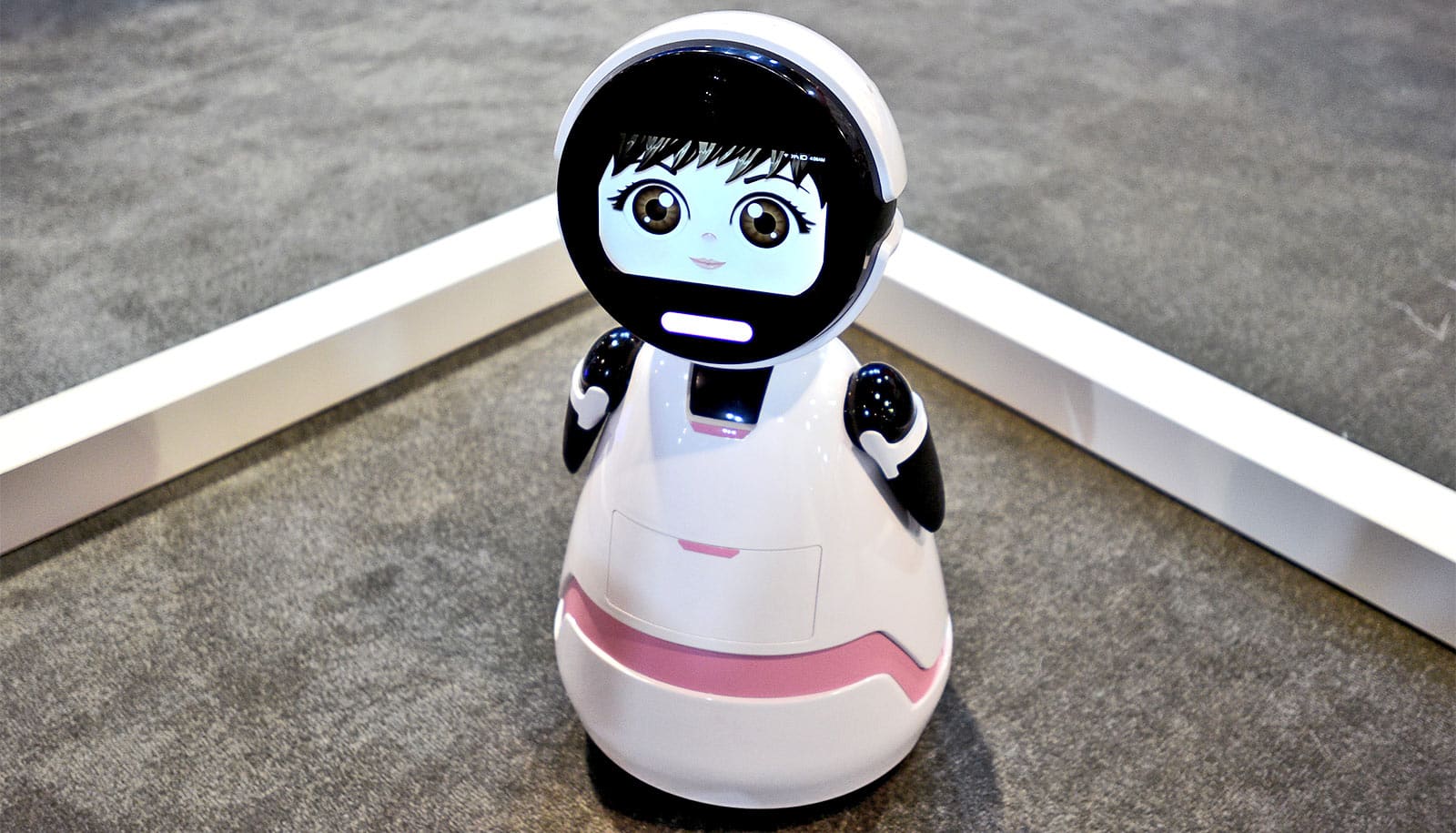Older adults are often left out of decisions surrounding technology related to their care, such as location trackers and companion robots, new research finds.
Clara Berridge, associate professor of social work at the University of Washington, studies issues facing older adults, in particular technology that can support care or a person’s ability to live independently.
She recently published two articles related to older adults and technology. In articles in the Journal of Elder Policy and Frontiers in Psychology, Berridge explores older adults’ opinions of companion robots, finding that such devices may not provide the blanket comfort or utility that creators presume—and that older adults have an interest in data protections.
“Older adults have been learning about, adapting, and integrating technology solutions into their lives for longer than anyone,” Berridge says. “Older adults’ feelings about technologies on offer to them for care and living at home, and their creative use, resistance, and other interactions with these technologies should be taken seriously.
“So much research, time, and money has been focused on pushing acceptance of technologies that could be better spent enabling control by older adults over direction, purpose, and design.”
Here, Berridge explains the importance of involving older adults in the design and use of technology:
What do you think is important for people outside the field to understand?
One of the themes in my research is that older adults are rarely empowered to refuse or negotiate how technology is used in their care. That doesn’t prevent many from refusing and negotiating nevertheless—older adults are not passive users—but that this kind of engagement is often discouraged in design and implementation.
My research on long-term care in peoples’ homes and in residential facilities has found that people are not meaningfully engaged in decisions about how and what data should be collected about them. There’s a misperception that most don’t want to be involved or consulted. Older adults are often configured as passive data points.
This matters because embedded in these technologies are certain values (e.g., that safety justifies invasion of privacy) or limitations on the older adult (i.e., they can’t deviate from routine, like younger adults can, without triggering an intervention).
With the algorithmic management of care, the person being targeted by technology may not share the priorities embedded in the devices themselves. When the technology practice enables older adults to be controlled, rather than enabling them to have control, this intensifies unbalanced power dynamics in care. It can mean restrictions or exercise of control over their lives.
There’s a lot of ageism at play in how technologies used in care are developed, hyped, and implemented. And ableism, particularly when it comes to dementia.
People might assume that surveillance technology is a means of protection. Can you talk about the positive and negative aspects of this kind of technology?
Different people are going to weigh the range of implications differently—in a single day I have talked with a person who likened her daughter using sensors to track her routines to the Gestapo, and another person without a support network who “wish[ed] someone cared enough about me to watch me on camera!”
As many […] have explained power is implicated in all the decisions (what data is collected, what’s excluded, how categories are determined, what behavior is allowed or prohibited—the very definition of the problem the technology is targeting).
We have been in a wakeup call moment, as COVID further exposed the dramatic racial disparities in health among older people and the lack of access to home care. Where’s the meaningful policy action? Where’s the influx of resources needed to combat social exclusion and racial inequities in health and long-term care access?
What we see are efforts to give lonely older adults AI companionship, deploy digital contact tracing in nursing homes, and employ AI to manage people more efficiently. Whose problem is that addressing? What are the opportunity costs of pursuing sideshow solutions that don’t touch the underlying problems?
You note in a recent study that some state aging agencies are distributing companion robots to assist with loneliness. Are they a solution?
Prompted by the pandemic, a lot of states have passed out furry pet-like or speaking robots with the goal of mitigating loneliness.
Together with researchers at Oregon Health & Science University, I surveyed more than 800 people, half of whom were over age 64, about whether they thought an artificial companion robot—one that can “talk and listen,” so not like Paro or other plush non-talking robots—would help them feel less lonely, if they were.
Only 3% replied “definitely yes.” A quarter answered “definitely no” and a significantly greater percentage answered “probably no” than “probably yes.” We also asked about comfort with small companion robots and different types of data use on the horizon.
This comment we heard in the study echoed a common sentiment among participants. A participant told us: “One of the problems I see with how we care for the elderly is the lack of contact with others. I am afraid that these measures would lead to less and less human contact for these folks. It might become easier and cheaper for the care system to use these measures and for our elderly to become more and more isolated.”
Others acknowledged positive potential uses of AI-enabled robots to assist with physical tasks—capacity that is limited at the moment—and drew a line at social interaction.
But the most-raised issue was invasion of privacy, and perception that artificial companion robot-based data collection is excessive monitoring. Many participants also raised concerns about data security, third party use, or exploitation of data.
For example, a participant explained that an AI companion or device could be especially helpful in alerting emergency personnel, but they were concerned about how data from such a device would be stored and used by third-party companies. Clearly, older adults would benefit from new regulation of AI, though their interests haven’t been represented very well so far in those discussions.
You’ve developed a prototype web app, Let’s Talk Tech, that would help older adults with dementia and their caregivers make joint decisions about technology. What are you finding from that approach?
This is the first-of-its-kind tool to help families meaningfully engage people living with dementia in decisions about technology use. I worked with the University of Washington Clinical Informatics Research Group (CIRG) to develop Let’s Talk Tech as a web app and with doctoral student Natalie Turner to pilot the app with volunteers from the UW Alzheimer’s Disease Research Center.
Families or others supporting people living with dementia don’t have those conversations about what the person would or would not want used with them, for understandable reasons. So the families need help, because they’re left to navigate a complex technological landscape without a map.
Having an informed conversation with the person living with mild-stage Alzheimer’s disease about their hopes and concerns and feelings about various technologies and other support options gave our pilot study participants a significantly better feeling of preparedness. They told us it provided the structure and direction for hard conversations that may not have otherwise happened. Many reported that it was not an easy conversation, but all noted that any discomfort was worth what was gained.
Source: University of Washington
“Older adults’ feelings about technologies on offer to them for care and living at home, and their creative use, resistance, and other interactions with these technologies should be taken seriously,” says Clara Berridge. “So much research, time, and money has been focused on pushing acceptance of technologies that could be better spent enabling control by older adults over direction, purpose, and design.”



